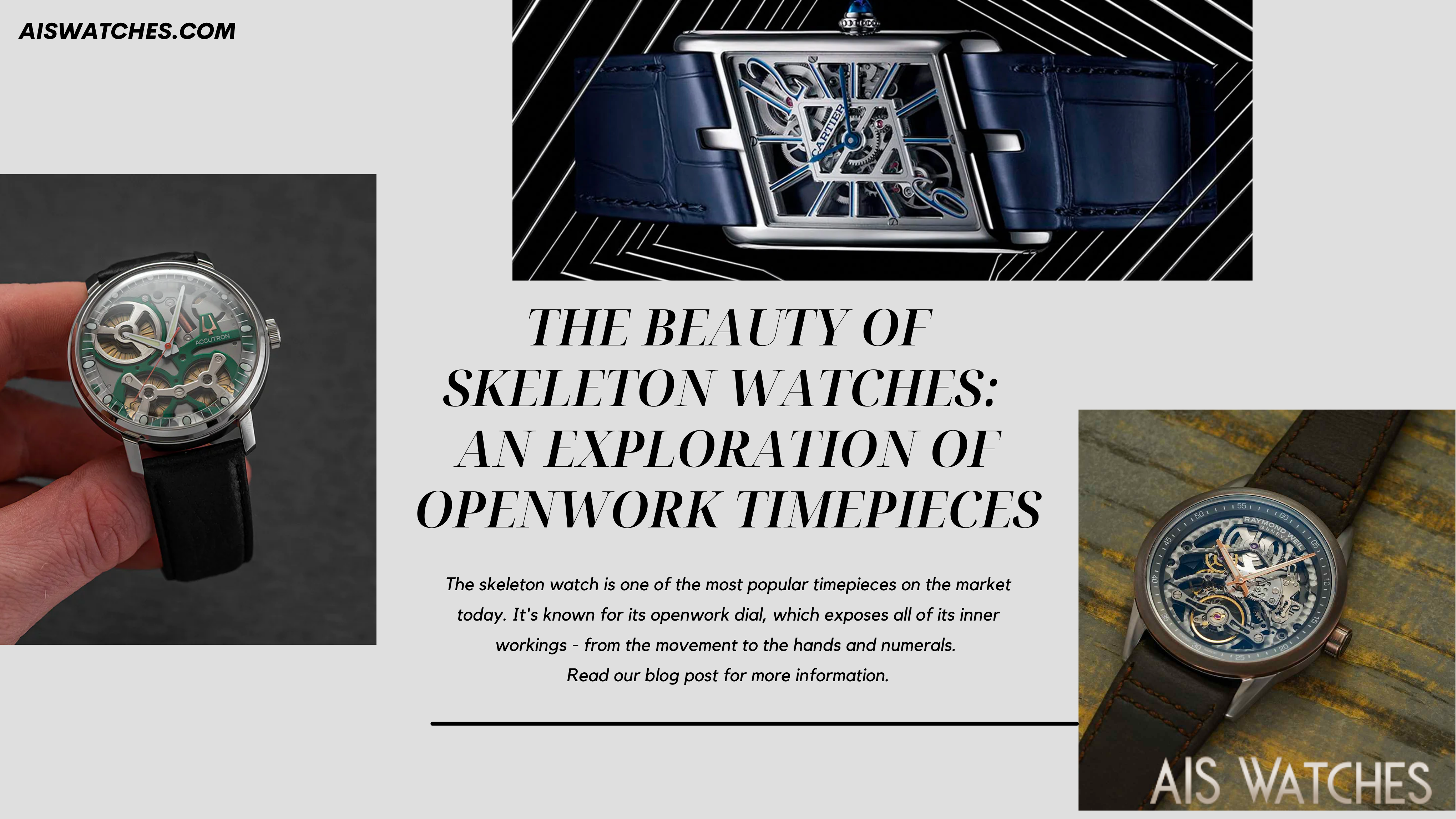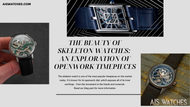The Beauty of Skeleton Watches: An Exploration of Openwork Timepieces
Posted by AIS Watches on May 17th 2023
The skeleton watch is one of the most popular timepieces on the market today. It's known for its openwork dial, which exposes all of its inner workings - from the movement to the hands and numerals. These watches differ from other types of watches in that they are made with clear crystal covers over them instead of metal casings. Thus, they allow us to see every detail inside without having any obstructions whatsoever.
The skeleton watch is basically an in-depth view of the inner workings of a timepiece. It has been around since the 18th century, when it was invented by André-Charles Caron, a French watchmaker.

The skeleton watch is basically an in-depth view of the inner workings of a timepiece. It has been around since the 18th century, when it was invented by André-Charles Caron, a French watchmaker. He called it an "openwork dial," which means that he left parts of his timepieces exposed so people could see how they worked.
The skeletonized movement (the mechanism behind every mechanical movement) has become popular among many watchmakers today due to its unique aesthetic appeal and functionality; however, there are some drawbacks associated with having this style on your wrist: namely that it can be hard to read at night or in low light situations because you don't have any numbers or hands blocking out light from reaching your eyesight!
Skeleton watches are often referred to as openwork dials, and they are usually made with white or silver hands and numerals on them.
Skeleton watches are often referred to as openwork dials, and they are usually made with white or silver hands and numerals on them. The word "skeleton" comes from the fact that you can see through the watch face from all sides.
The reason why people love skeleton watches so much is because they're beautiful! There's something about seeing all those gears working together in harmony that's just so satisfying--especially when you know how much work went into making your timepiece work perfectly (and perfectly accurately).
The original design of the skeleton watch was meant to expose its inner workings, but it wasn't long before people started using this feature in order to add some novelty (and mystery) back into their daily life.
Skeleton watches were originally designed to expose their inner workings, but it wasn't long before people started using this feature in order to add some novelty (and mystery) back into their daily life.
The original purpose of the skeleton watch was to show off its inner workings, but now it's become an important part of watchmaking industry and seen as a symbol of luxury and sophistication.
The basic premise behind openwork watches is that they bring together two things that were previously considered incompatible - an extremely detailed dial with delicate embellishments surrounding it and a clear crystal cover that shows all of these intricacies off in full view.
The basic premise behind openwork watches is that they bring together two things that were previously considered incompatible - an extremely detailed dial with delicate embellishments surrounding it and a clear crystal cover that shows all of these intricacies off in full view.
The basic premise behind openwork watches is that they bring together two things that were previously considered incompatible - an extremely detailed dial with delicate embellishments surrounding it and a clear crystal cover that shows all of these intricacies off in full view.
This was the original design for skeleton watches, which date back to at least 1810 when Breguet first introduced them as part of their "tout en un" (all in one) timepieces. They were originally called "open-faced" because they lacked any kind of frame or bezel around the face--just open space between crystal and dial where you could see everything going on inside your watch without obstruction.
Today, however, we think about openwork designs differently: The term refers not only to those original Breguets but also any other type of watch featuring either partial or full transparency through its caseback window(s).
Skeleton watches are a great way to show off your style. They're also pretty easy to find, since most watchmakers make them in their own unique styles and colors. If you want something simple or minimalistic then check out brands like MB&F or Sinn; if you want something more elaborate then try some of the smaller companies like F.P Journe or Christophe Claret (who also make some really nice openwork pieces).
 Menu
Menu




